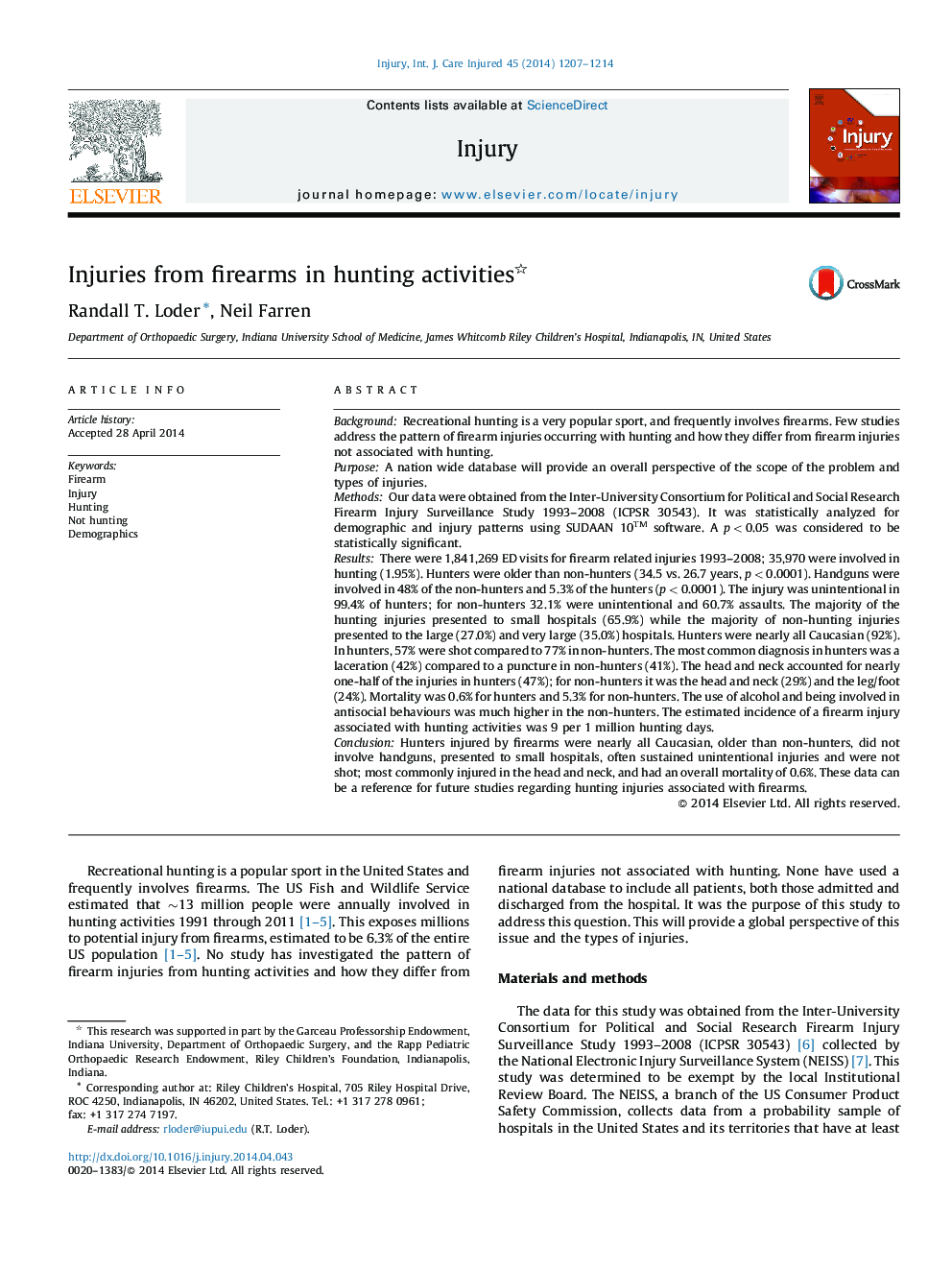| Article ID | Journal | Published Year | Pages | File Type |
|---|---|---|---|---|
| 3239542 | Injury | 2014 | 8 Pages |
BackgroundRecreational hunting is a very popular sport, and frequently involves firearms. Few studies address the pattern of firearm injuries occurring with hunting and how they differ from firearm injuries not associated with hunting.PurposeA nation wide database will provide an overall perspective of the scope of the problem and types of injuries.MethodsOur data were obtained from the Inter-University Consortium for Political and Social Research Firearm Injury Surveillance Study 1993–2008 (ICPSR 30543). It was statistically analyzed for demographic and injury patterns using SUDAAN 10™ software. A p < 0.05 was considered to be statistically significant.ResultsThere were 1,841,269 ED visits for firearm related injuries 1993–2008; 35,970 were involved in hunting (1.95%). Hunters were older than non-hunters (34.5 vs. 26.7 years, p < 0.0001). Handguns were involved in 48% of the non-hunters and 5.3% of the hunters (p < 0.0001). The injury was unintentional in 99.4% of hunters; for non-hunters 32.1% were unintentional and 60.7% assaults. The majority of the hunting injuries presented to small hospitals (65.9%) while the majority of non-hunting injuries presented to the large (27.0%) and very large (35.0%) hospitals. Hunters were nearly all Caucasian (92%). In hunters, 57% were shot compared to 77% in non-hunters. The most common diagnosis in hunters was a laceration (42%) compared to a puncture in non-hunters (41%). The head and neck accounted for nearly one-half of the injuries in hunters (47%); for non-hunters it was the head and neck (29%) and the leg/foot (24%). Mortality was 0.6% for hunters and 5.3% for non-hunters. The use of alcohol and being involved in antisocial behaviours was much higher in the non-hunters. The estimated incidence of a firearm injury associated with hunting activities was 9 per 1 million hunting days.ConclusionHunters injured by firearms were nearly all Caucasian, older than non-hunters, did not involve handguns, presented to small hospitals, often sustained unintentional injuries and were not shot; most commonly injured in the head and neck, and had an overall mortality of 0.6%. These data can be a reference for future studies regarding hunting injuries associated with firearms.
